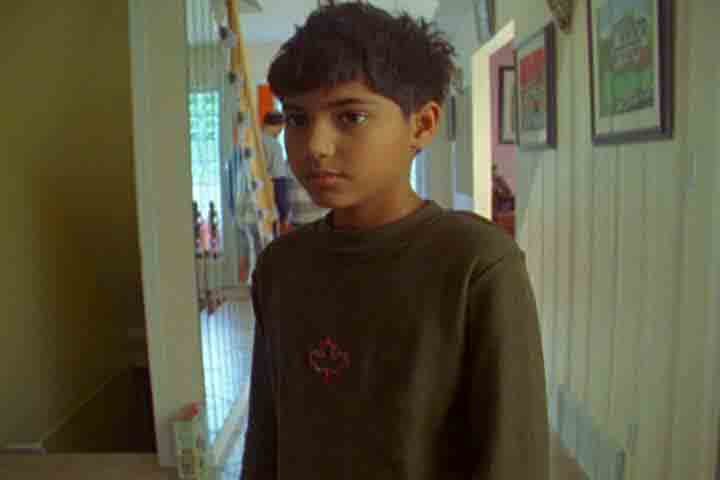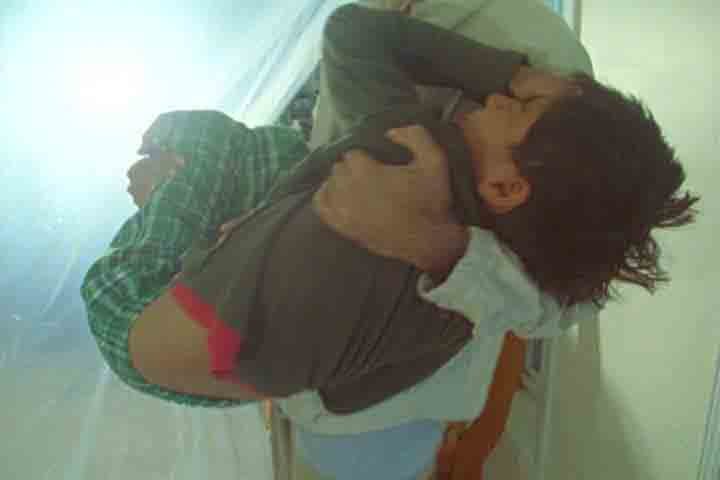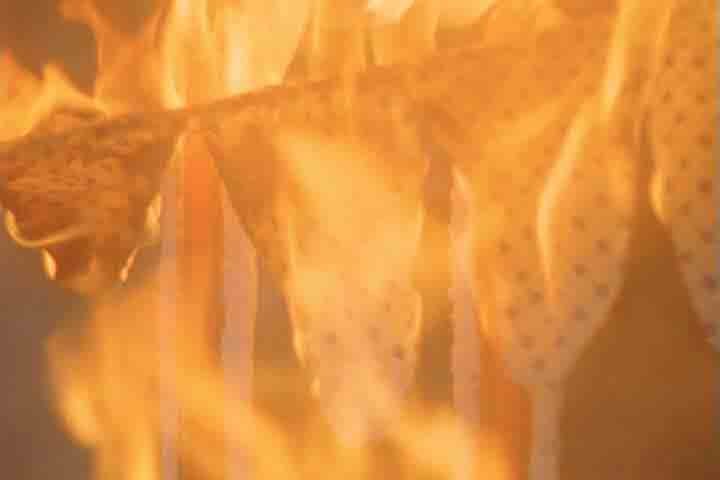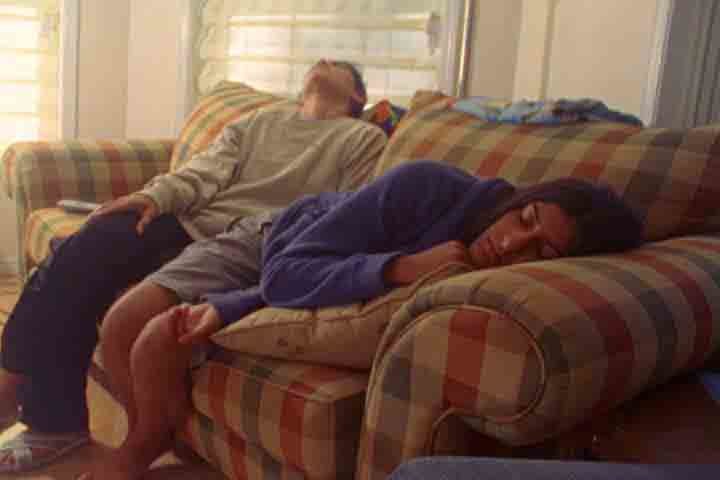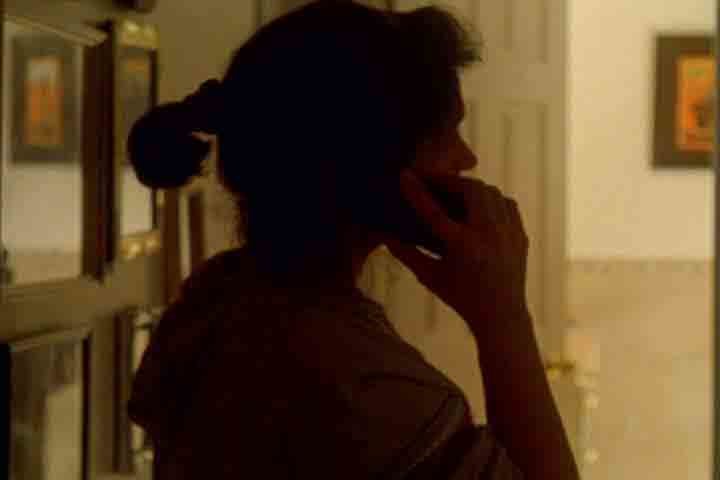
Zamir Merali
Basic Member-
Posts
185 -
Joined
-
Last visited
Everything posted by Zamir Merali
-
Trailer for the 16mm Feature
Zamir Merali replied to Zamir Merali's topic in Please Critique My Work
It'd be great if I could get some feedback. From the trailer you can only really see the images but none of the story. Maybe I'll post an actual scene if somebody wants. -
I recently finished making a 16mm feature film on an arriflex 16s. There's been alot of threads with the general questions "can i shoot a feature MOS and dub the sound in later?" The answer is, if you want to remain sane, DON'T. The editting took me about a month and the sound has taken over 4 months and I'm still not completely done. This is a trailer that is only on youtube quality but it would be great if you guys could give me some sort of critique. I shot the entire feature for about a grand and I'm 16. I wanted to make a slightly unconventional trailer because this is an unconventional movie. It has a story with dialogue, but the story takes thinking to figure out.
-
16mm - Black & White
Zamir Merali replied to Hugo Alexandre's topic in Students, New Filmmakers, Film Schools and Programs
Generally a yellow number 8 filter is used on most outdoor black and white shooting. The filter is sometimes called k2. Black and white film is a little oversensitive to blue light, which is why the sky tends to always blow out. A yellow filter will just block out some blue light. For a more extreme effect you can use orange filters or red filters. A deep red can make the sky black and give a day for night look. -
16mm - Black & White
Zamir Merali replied to Hugo Alexandre's topic in Students, New Filmmakers, Film Schools and Programs
Generally a yellow number 8 filter is used on most outdoor black and white shooting. The filter is sometimes called k2. Black and white film is a little oversensitive to blue light, which is why the sky tends to always blow out. A yellow filter will just block out some blue light. For a more extreme effect you can use orange filters or red filters. A deep red can make the sky black and give a day for night look. -
" The Golden Compass "
Zamir Merali replied to John Holland's topic in On Screen / Reviews & Observations
When I saw the film and the "moonlit" shot came up, people beside me actually laughed. In the shot before the girl seems to be sprinting and then it cuts to the oddly illuminated shot of her lightly jogging. It seemed to take me out of the action, as did the overhead shots where the gril ran under the camera and the shot turned upside down. -
This guy got his kids to build him a film transport mechanism out of their lego set, while he programed his scanner to automatically scan his super 8 film. The result is a surprisingly good homemade scanner that doesn't need any babysitting and would cost nothing if you have the parts. http://www.kaimio.fi/blogs/harri/entry/fun...dstorms_old_8mm
-
16mm splicer
Zamir Merali replied to Graham Aston Burt's topic in Students, New Filmmakers, Film Schools and Programs
A 16mm splicer can be anything from a thousand dollar piece of machinery to a pair of scissors and some cement. It obviously depends on your needs. If you are cutting a positive print then you need to get a splicer that has a viewer (a screen that lets you watch the movie). A spicer for cutting negative doesnt need that. Do you want sound? Do you want to use glue or tape to make your splices. Try to be a bit more specific and people will recomend specific models. -
Key to Reserva: Scorsese's comeback
Zamir Merali replied to a topic in On Screen / Reviews & Observations
It looks alot like an advertisement for the drink the guy is stealing. I thought it was great, scorsese is a little weird but a genius nontheless. -
That's sort of like asking, "If I scrape all the blue paint off my car, will my car still be blue?"
-
I don't know about those, but I have a shoulder mount, which I never use, that is made for the arriflex 16s. It's pretty old and uncomfortable but it works surprisingly well for such a simple design. Pretty much, it consists of a metal U that locks onto your shoulder. A bar from the metal U extends and attaches to the tripod mount of the camera. Then you hold onto the ordinary hand grip with your hand. I can't find any pictures of it online but it was made by arriflex.
-
Wow. I never thought that I would see a movie that I would consider alright where every shot is negative black and white, the camera moves erratically hand held from object to object and where there is a section that repeats the same five shots for almost a minute with a receipt printer in the background. But the truth is that the movie works really well and the end is pretty effective. Compared to other movies where this sort of story is involved it felt very real and nothing took me out of the story, meaning that the entire film worked.
-
If I remember properly, that was actually Sidney Lumet asking Akira Kurosawa the question about the shot. Sidney Lumet talks about it in his book, Making Movies.
-
Lightin a dark room
Zamir Merali replied to justin bender's topic in Students, New Filmmakers, Film Schools and Programs
Another thing that might be pretty obvious is that most movie sets, when lit for a dark look are actually not that dark to the eye. Some people like to say that to shoot in the dark you need light. The scene is often lit to a brighter level with lots of contrast and then the camera is simply stopped down. Since you are using digital it would be easy to just stop down and see how it looks in the viewfinder until you like it. Sometimes, even when it's day outside your interior can look like night with enough underexposure and when windows aren't shown. -
If your looking for 16mm in Canada that is no problem. kodak.ca has an office in canada and they ship everywhere. However, for better prices contact Stock Options in Toronto or Certified Film in Toronto. They can get you some amazing deals.
-
The normal power output for a Canadian or US home on a single circuit is 15 amps at 120 volts. 15 * 120 is 3000 watts. This doesn't mean you can put 3000 watts of lights in a circuit though because a light draws considerably more power when it first turns on. I would say you can put about 2000 watts of light on a circuit and your breaker wont trip. Dont be too worried about fires because fuses and breakers are set to trip well before the fire hazard point. I always have my three 500 watt lights plugged into my house circuits with no ill effects.
-
Why not use a back lit blue screen because it seems more likely that blue light would be coming through the window at night rather than green.
-
One question I've always had about Schindler's List is what kind of film this picture was printed on. It was obviously shot on black and white film and I'm assuming it was printed on black and white film because its hard to print black and white on a colour film without getting a colour cast. How did they have the one sequence with the red girl then if it was printed on black and white?
-
What is fair payment here?
Zamir Merali replied to Conrad Yoder's topic in Business Practices & Producing
The problem with starting to pay your actors is that when you are asking them to work for free they feel like they are helping your out and will give you enough effort and be in good nature. As soon as you start paying them however, if you don't pay them enough they will feel like you are taking advantage and will give you less effort than if you wern't paying them at all. For a 2-3 day short for the average female actress you would be looking at atleast minimum wage. If your working 8 hour days for 3 days you'll end up paying about 240 dollars. That is probably not enough to make her feel happy so i would recomend anything inbetween 300 to 500. Don't take my word for it though, get a few other opinions. -
I've never used the A-minima, but i have used many other 16mm cameras and if there was a loop loss or some sort of film problem there would definitely be some sort of exposure on the film. Normally the footage would be really blurred and streaked. The only thing that I could guess happened is that your camera body was faulty so the shutter would not open and close. Another thing that can happen on the arriflex 16s is that sometimes the motor turns and makes a noise but the actual camera is not connected to the motor properly. Again, i'm not sure if that problem ever exists with your camera. if there was always the normal flickering in the viewfinder during each take all of your film should have had something on it.
-
David Lynch recently made an experimental type movie on mini-dv called Inland Empire. You can get it on amazon easily. He says the main reason why he liked the format for this movie was because he could shoot quickly. Artistically he said that he like the way that there was room for the imagination to fill in parts because the mini-dv camera doesn't put everything up on screen. Inland Empire is a three hour experimental type film with large sections involving his actors in rabbit suits dancing around with lumberjacks thrown in. (just a warning).
-
No doubt very true. But i wouldn't rule it out entirely. I haven't seen your film but I'm sure, based on what others have said, it seems to be a nice independant film. Out of the 3800 films that Sundance gets atleast a 1000 have to be cheap mini dv student films that are filled with cliches and distracting technical problems. Out of the 2800 left only 800 or so are forign films like yours that can qualify for the midnight at sundance or the specturm category. So you have about a 1 in 25 chance. Not great, but a low buget 35mm film might just stand a chance. As long as it's original enough and entertaining. Anyway good luck, my incredibly low budget 16mm feature is also in but the chances of that getting accepted are a million to one.
-
Congrats on finishing the film. Did you submit to Sundance like you were planning on?
-
16 mm frame grabs from my summer project
Zamir Merali replied to Zamir Merali's topic in Please Critique My Work
I'll post a trailer once I get a rough cut of the movie done. When sundance says they accept a rough version what do they mean. I'm hoping it can include, bad foley, temp or missing music, unfinished cc and some missing scenes. Thanks for taking a look at my stills. here's some more. -
Hi guys. I shot a 16mm project this sumer and am in the editing phase now. I am really pressed for time and I am trying to get a rough version of the movie in for sundance. This movie was really just to practice directing while getting a chance to try the film format, I'm not expecting to get accepted into anything. I used an arriflex 16s that I got for 600 dollars and the two schnieder lenses that came with it. It's a foreign language movie and I managed to get really good performances out of my non-actors. Here's some frame grabs from the movie. They are really low quality. I was amazed at the beauty of the 16mm film format compared to any digital I have used. I fell in love with film and now its going to be hard to shoot with digital. I already noticed that i get a stab of anxiety every time I take my eye away from my digital cameras viewfinder before I realize that the film won't get flashed. There are plenty more good shots that would like to post also but there is not enough room. I've got to get back to editing any way.
-
The correct thing to do when using 7218 since it is a fairly high speed and thus rather grainy stock is to over expose by 1 stop. Since you are over exposing the colour saturation increases slightly but mainly the scene information is stored higher up in the film's curve. The higher area of the curve has less grain but make sure that when you print your film or when you telecine it, you tell them to darken it slightly (shooting a 18% gray card would really help). By overexposing you got less grain and more saturation but you darkened it to a normal brightness level so it looks much better. Under exposing would be the exact wrong thing to do since it would do the opposite of what you want (miky, grainy blacks and lower saturation).


